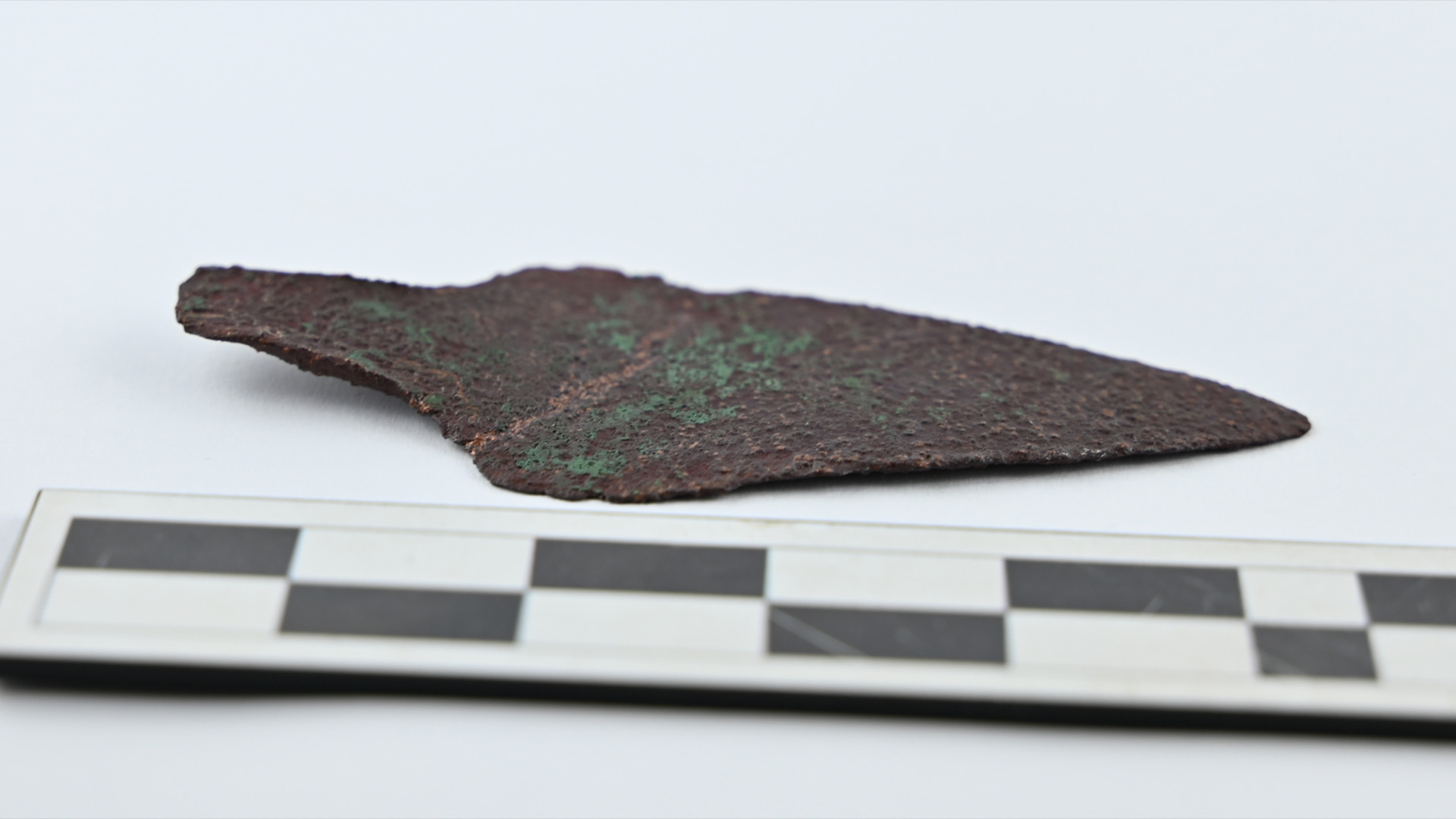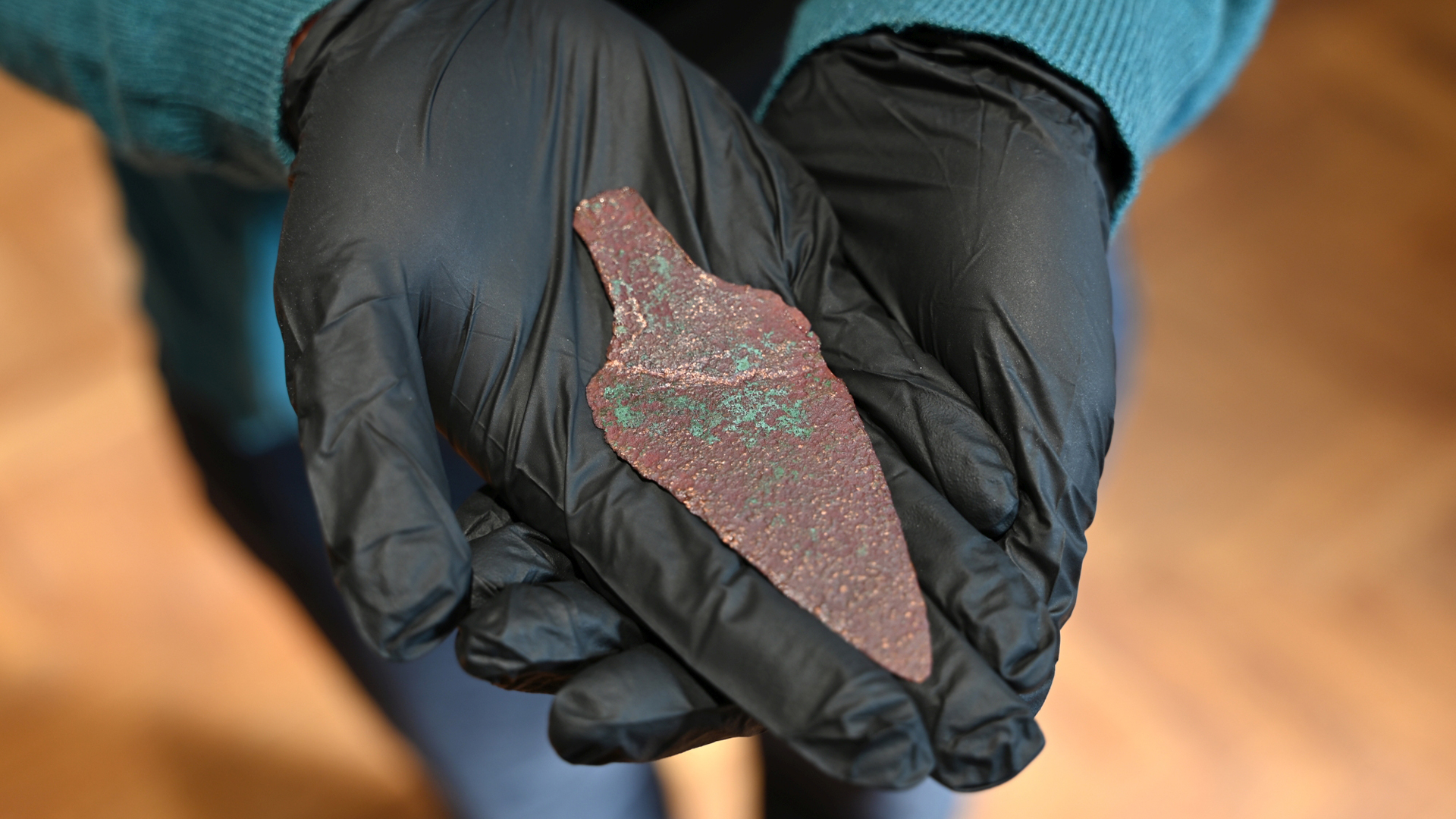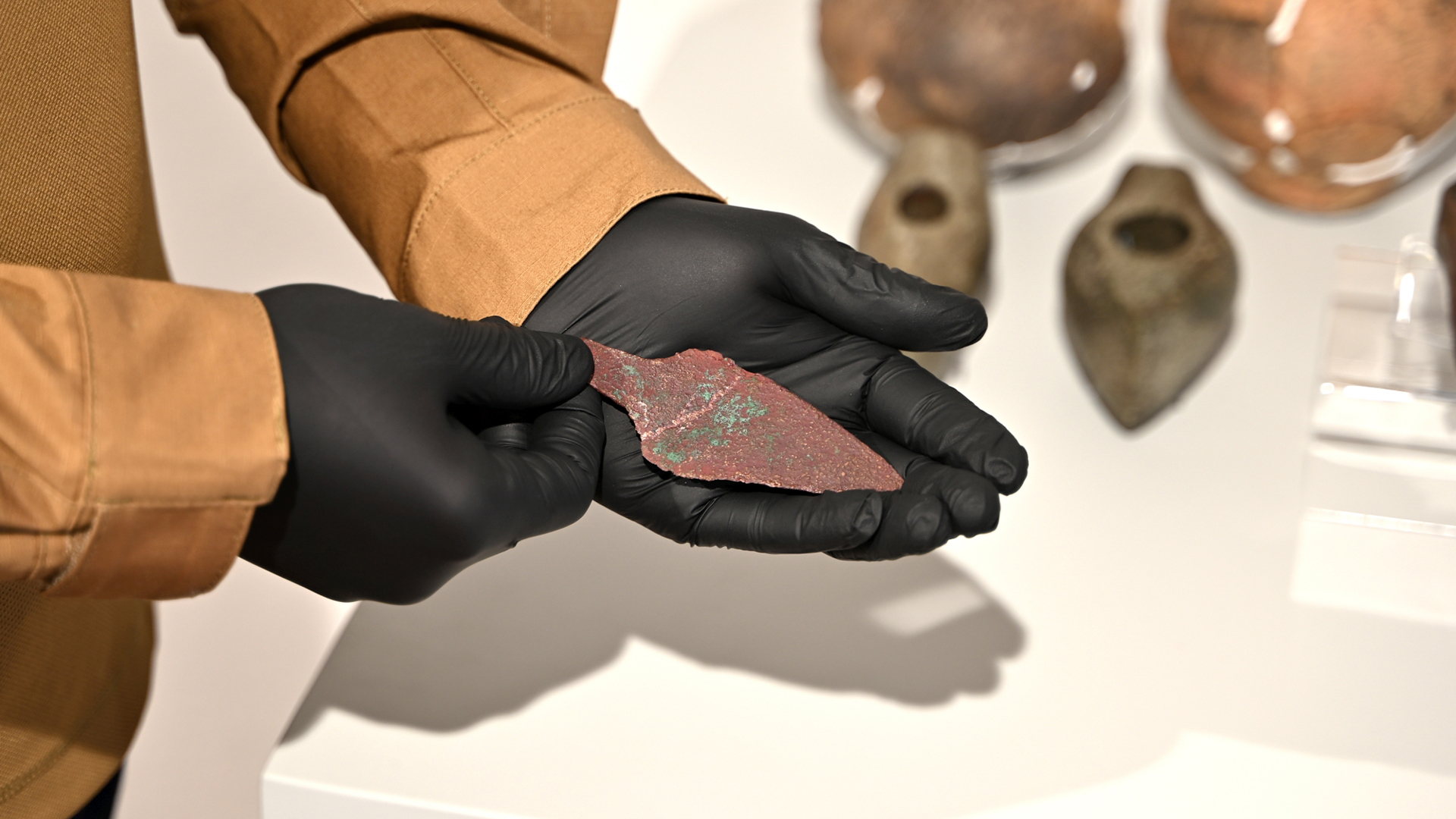4,000-year-old copper dagger unearthed by metal detectorist in Poland
The rare copper dagger may have belonged to "a warrior of a very high social status."

A metal detectorist has discovered a 4,000-year-old copper dagger, likely from an elite warrior, in a forest near the village of Korzenica in southeast Poland.
"The Korzenica dagger is so far the oldest metal dagger discovered [in] south-eastern Poland," said Marcin Burghardt, an archaeologist at the Orsetti Tenement House Museum in Poland who analyzed the dagger. "The only similar dagger in Poland was uncovered in the [1960s] so the new find comes as a great surprise," Burghardt told Live Science.
A team went to examine the spot where the metal detectorist discovered the dagger but found no other artifacts. "When we examined the spot, we found neither additional finds nor traces of archaeological features," Burghardt said. Because of the lack of additional artifacts, "we cannot link the dagger to a specific archaeological culture," Burghardt added.
Related: Perfectly preserved 7,000-year-old skeleton unearthed during renovation in Poland
Metal age clues
Archaeologists were able to date the dagger by comparing it to similar daggers found in Central Europe and the Ukrainian forest steppe that have been securely dated. Based on the comparisons, "it seems safe to say that the Korzenica dagger was used somewhere in the [second] half of the 3rd millennium BC," Burghardt wrote.

The person who used the dagger was probably "a warrior of a very high social status," Burghardt said. It's unlikely it would have been used in battle, however. "I think copper daggers were, first and foremost, tokens of a high social status," Burghardt said. "They are quite soft, so they would not be [very] useful in battle."
The dagger may help provide clues about how metal use in southeastern Poland started, eventually bringing about the use of copper and bronze. "It dates back to the period when copper objects in this part of Poland were still very rare," Burghardt said.
Sign up for the Live Science daily newsletter now
Get the world’s most fascinating discoveries delivered straight to your inbox.

Scientists plan to perform a metallurgical analysis, which may help determine where the dagger came from and how it was manufactured; it's possible it was made outside this region. If the dagger came from the Ukrainian forest steppe or Central Europe, it may indicate that ideas and goods were coming to southeastern Poland from either of those regions, Burghardt said.
The find was first reported by Science in Poland, a collaboration between the Polish government and media.

Owen Jarus is a regular contributor to Live Science who writes about archaeology and humans' past. He has also written for The Independent (UK), The Canadian Press (CP) and The Associated Press (AP), among others. Owen has a bachelor of arts degree from the University of Toronto and a journalism degree from Ryerson University.









